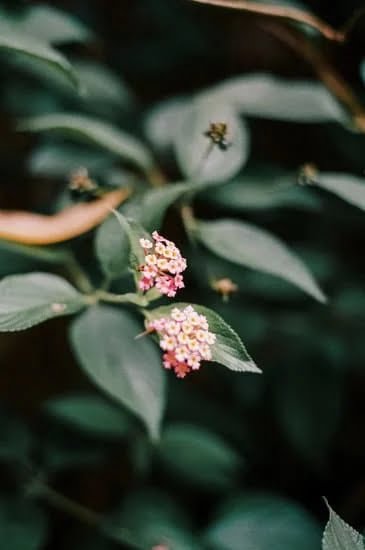A well-landscaped garden can significantly enhance the overall appearance of a property, creating a tranquil and inviting outdoor space. In this article, we will explore various ideas for landscaping a garden, from traditional to modern and eco-friendly designs. We will delve into the importance of garden landscaping, the different types of landscaping ideas available, and how to incorporate functional areas within the garden for maximum enjoyment.
Landscaping a garden not only adds visual appeal but also contributes to the overall value of a property. From boosting curb appeal to creating functional outdoor living spaces, a well-designed garden can transform an ordinary yard into a stunning oasis. Whether you prefer a low-maintenance design or a sustainable eco-friendly approach, there are endless possibilities when it comes to landscaping your garden.
In addition to discussing the importance and benefits of garden landscaping, we will also explore various design elements such as plants and flowers, hardscaping features like patios and walkways, creative use of lighting, water features, color palette selection, focal points creation, and incorporation of functional areas within the garden. Moreover, we will provide maintenance tips to keep your landscaped garden looking beautiful throughout the year. Let’s dive into an exciting world of enchanting gardens.
Types of Garden Landscaping
When it comes to landscaping a garden, there are various types of design approaches that homeowners can consider. Each type of garden landscaping offers its own unique aesthetic and functional appeal, catering to different preferences and lifestyles. Here are some popular types of garden landscaping ideas to consider:
Traditional Garden Landscaping Ideas
Traditional garden landscaping often features a formal layout with symmetrical patterns, well-manicured lawns, and classic elements such as topiaries and fountain features. This timeless approach to garden design exudes elegance and lends a sense of refinement to the outdoor space.
Modern Garden Landscaping Ideas
For those who prefer a more contemporary look, modern garden landscaping may be the ideal choice. This style often incorporates clean lines, minimalist plantings, and sleek hardscape materials like concrete or metal. Modern gardens typically focus on creating a sense of openness and simplicity.
Sustainable and Eco-Friendly Garden Landscaping Ideas
In recent years, there has been a growing emphasis on environmentally-friendly garden designs. Sustainable landscaping ideas prioritize the use of native plants, water-efficient irrigation systems, and eco-conscious materials. By choosing sustainable practices in the garden, homeowners can contribute to biodiversity conservation and reduce their carbon footprint.
Low-Maintenance Garden Landscaping Ideas
For individuals seeking a low-maintenance outdoor space, there are plenty of landscaping ideas that require minimal upkeep. This may include using hardy perennials, installing automated irrigation systems, and reducing the need for regular pruning or mowing. Low-maintenance garden landscaping allows homeowners to enjoy a beautiful outdoor area without extensive maintenance requirements.
By considering these different types of garden landscaping ideas, homeowners can create an outdoor space that not only reflects their personal style but also enhances the overall appeal of their property. Whether it’s incorporating sustainable elements or embracing a traditional aesthetic, there are plenty of options to suit every taste.
Landscaping Design Elements
When it comes to landscaping a garden, there are various design elements that can be incorporated to enhance the overall appeal of the outdoor space. One of the fundamental design elements is the use of plants and flowers. The selection and arrangement of greenery can significantly impact the aesthetic of a garden. From colorful flower beds to lush shrubs and trees, the right combination and placement of plants can create a visually stunning landscape.
In addition to plants and flowers, hardscape features such as walkways, patios, and decks also play a crucial role in garden landscaping. These elements not only provide functional spaces for activities but also add structure and depth to the outdoor area. The choice of materials for hardscaping, whether it be natural stone, wood, or concrete, can further contribute to the overall design theme of the garden.
Another important aspect of landscaping design is the creative use of lighting. Illuminating the garden with strategically placed lights can dramatically alter its appearance, adding ambiance and drama during nighttime hours. Whether through pathway lighting, uplighting trees, or highlighting architectural features, lighting can bring an added dimension to a landscaped garden.
Lastly, incorporating water features into garden landscaping can have a profound impact on its overall design. Fountains, ponds, or waterfalls not only add tranquility and visual interest but also attract wildlife to the garden. The sound of running water creates a soothing atmosphere while adding an element of luxury to outdoor spaces.
| Landscaping Element | Description |
|---|---|
| Plants and Flowers | The use of various types of flora to enhance the aesthetic appeal of a landscaped garden. |
| Hardscape Features | Incorporating pathways, patios, and decks to provide structure and functionality in garden landscaping. |
| Lighting | Creative use of lighting to add ambiance and drama during nighttime hours in a landscaped garden. |
| Water Features | Addition of fountains, ponds or waterfalls to introduce tranquility and luxury in outdoor spaces. |
Color Palette and Theme Selection
When it comes to creating a beautiful and visually appealing garden, one of the key elements to consider is the color palette and theme selection. Choosing the right colors and overall theme for your garden can help create a cohesive and harmonious outdoor space that reflects your personal style and preferences. Here are some tips and ideas for selecting the perfect color palette and theme for your garden landscaping:
- Consider the existing elements: Take into account the colors of your home’s exterior, existing hardscape features, and natural surroundings when choosing a color palette for your garden. This will ensure that your garden seamlessly complements its surroundings.
- Explore different color combinations: Experiment with various color combinations to create a visually striking garden. For instance, pairing complementary colors like purple and yellow or orange and blue can add vibrancy and interest to your outdoor space.
- Themed garden landscaping: Consider incorporating a specific theme into your garden design, such as a tranquil zen garden with minimalistic colors and clean lines, or a lively tropical garden with bold and vibrant hues. Themed gardens can create a distinct ambiance in your outdoor space.
Choosing the right color palette and theme for your garden landscaping can significantly impact its overall aesthetic appeal. By carefully considering these elements, you can create a stunning outdoor retreat that reflects your personality while enhancing the beauty of your property.
In addition to choosing the right colors for your garden, consider incorporating themed elements that resonate with you. Whether you opt for an elegant cottage-style garden with soft pastel tones or a modern landscape with sleek lines and monochromatic hues, selecting a theme can bring cohesion to your outdoor space. With careful planning and consideration of different options available in traditional, modern, eco-friendly, low-maintenance or sustainable gardening styles this decision becomes easier to make.
Creating Focal Points
In garden landscaping, creating focal points is essential for drawing the eye and adding interest to the outdoor space. Whether it’s a sculpture, a water feature, or unique plants, focal points can help elevate the overall aesthetics of the garden.
The Importance of Focal Points
Focal points serve as visual anchors that guide the viewer through the garden. They create a sense of balance and harmony while also adding a touch of personality to the space. By strategically placing focal points, landscapers can create a sense of depth and dimension in the garden, making it more visually appealing.
Ideas for Creating Focal Points
When it comes to creating focal points in a garden, there are numerous possibilities to explore. One idea is to incorporate sculptures or artistic installations that capture attention and add an element of artistry to the landscape.
Water features such as fountains or ponds can also act as stunning focal points, providing both visual and auditory appeal. Additionally, unique and eye-catching plants like ornamental trees or flowering shrubs can be used to draw focus in specific areas of the garden.
Drawing Attention to Focal Points
Once focal points are established in the garden, it’s important to enhance their visibility through strategic design elements. This could involve using lighting to illuminate them at night, creating paths or walkways that lead directly to them, or framing them with carefully placed plantings. By drawing attention to these focal points, their impact on the overall garden landscaping can be maximized.
By incorporating well-thought-out focal points into garden landscaping design, homeowners can create a captivating outdoor space that is both visually appealing and engaging. These key elements not only add beauty and charm but also contribute to the overall enjoyment and relaxation of spending time in a well-landscaped garden area.
Incorporating Functional Areas in the Garden
Creating a functional and beautiful outdoor space within your garden can greatly enhance the overall appeal of your property. Here are some ideas for incorporating functional areas in the garden:
– Seating Areas: Create cozy seating areas throughout your garden using comfortable outdoor furniture, such as benches, loungers, or chairs. Consider placing these seating areas in different spots throughout the garden to provide various vantage points and encourage relaxation and enjoyment of the space.
– Outdoor Kitchen and Dining Spaces: If you enjoy entertaining outdoors, consider creating an outdoor kitchen and dining area in your garden. This could include a built-in grill, countertops for food preparation, and a dining table with seating for guests. You can even add a pergola or canopy to provide shade during sunny days.
– Garden Pathways: Incorporating winding pathways within your garden not only adds visual interest but also provides practical functionality. Use materials such as gravel, pavers, or stepping stones to create paths that lead visitors through different areas of the garden while also protecting delicate plants from foot traffic.
By integrating these functional elements into your garden landscape design, you can create an inviting and versatile outdoor space that is perfect for relaxation, entertainment, and enjoying the beauty of nature right outside your door. These ideas for landscaping gardens demonstrate how you can make the most of your outdoor space while enhancing its aesthetic appeal.
Sustainable and Eco-Friendly Landscaping Ideas
Landscaping gardens in a sustainable and eco-friendly manner not only benefits the environment but also contributes to a healthier and more vibrant garden. One idea for landscaping a garden in an eco-friendly way is to use native plants. These plants are well-suited to the local climate, soil, and wildlife, promoting biodiversity as they provide food and habitat for local species. Additionally, native plants require less water and maintenance, making them a practical choice for sustainable landscaping.
Incorporating water-efficient and drought-tolerant landscaping practices is another important aspect of eco-friendly garden landscaping. By using methods such as drip irrigation systems or choosing plants that require minimal water, homeowners can reduce their overall water consumption while maintaining a beautiful garden. This not only conserves water but also reduces the need for chemical fertilizers and pesticides that can be harmful to the environment.
Furthermore, composting and recycling can be integrated into garden landscaping to minimize waste and promote sustainability. Creating a composting area for organic waste such as leaves, grass clippings, and kitchen scraps provides nutrient-rich soil amendments for the garden. In addition, using recycled materials for hardscape features like walkways or retaining walls reduces the environmental impact of landscaping projects. These sustainable practices contribute to an eco-friendly approach to gardening that benefits both homeowners and the planet.
| Benefit | Description |
|---|---|
| Promotes Biodiversity | Native plants provide food and habitat for local species |
| Water Efficiency | Reduces overall water consumption through efficient irrigation systems |
| Waste Reduction | Composting organic waste minimizes landfill contribution; using recycled materials reduces environmental impact |
Maintenance Tips for a Landscaped Garden
In conclusion, landscaping your garden can significantly enhance the overall appeal and value of your property. Whether you opt for a traditional, modern, sustainable, or low-maintenance design, the use of plants, hardscape features, and creative lighting can transform your outdoor space into a beautiful and functional area. By carefully selecting a color scheme and theme, as well as creating focal points and incorporating functional areas, you can bring your landscaping ideas to life.
When it comes to garden maintenance, there are several essential tasks to keep in mind in order to keep your landscaped garden looking beautiful all year round. Regular watering, pruning, and weeding are important for the health of your plants and flowers. Additionally, incorporating sustainable and eco-friendly practices such as using native plants and water-efficient landscaping can help promote biodiversity while conserving resources.
For those seeking low-maintenance options for their landscaped garden, selecting drought-tolerant plants and incorporating easy maintenance features can help minimize the effort needed to keep the garden looking beautiful. By following these maintenance tips and upkeep ideas for a landscaped garden area, you can enjoy a stunning outdoor space without the added stress of extensive maintenance.
With the right planning and care, your landscaped garden will continue to be a source of beauty and enjoyment for years to come.
Frequently Asked Questions
What Are the 7 Principles of Landscaping?
The 7 principles of landscaping include unity, balance, proportion, focalization, simplicity, variety, and sequence. Unity refers to the cohesive design of the landscape as a whole. Balance involves creating visual equilibrium through the distribution of elements.
Proportion focuses on the relationship between the size of different elements within the landscape. Focalization highlights a specific area or feature as a visual focal point for the design.
What Are the 7 Steps to Landscape Design?
The 7 steps to landscape design include conducting a site analysis, developing a design concept, creating a preliminary design, refining the design plan, preparing final construction documents, selecting a contractor (if applicable), and overseeing construction and installation. Each step is crucial to ensuring that the final landscape design effectively meets functional and aesthetic needs.
What Is the Cheapest Landscape Fill?
The cheapest landscape fill often depends on availability and location. Common options might include sand or gravel from local quarries or construction sites.
Additionally, some garden centers or landscaping businesses may offer discounted or surplus fill materials at lower costs. Regardless of cost considerations, it’s important to prioritize the quality and suitability of fill materials for their intended use in landscaping projects.

Welcome to my gardening blog! I am passionate about plants and enjoy sharing my knowledge and experiences with others. In this blog, I will write about everything related to gardening, from tips on how to get started to updates on my own garden projects.





